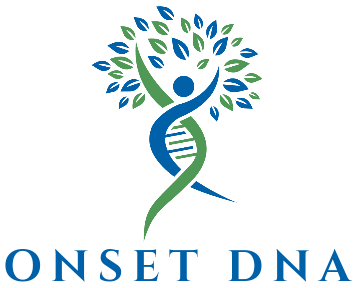
The Accuracy of DNA Testing as an Accuracy tool has proven invaluable in areas such as ancestry tracking, medical diagnosis, and forensic investigation. DNA tests boast a high degree of accuracy, but undocumented factors impact test reliability.
Variations also influence the final results in testing companies, sample quality, and testing methodologies. Understanding these factors is essential before fully trusting DNA results. In this article, we will explore how accurate DNA tests are, the factors that impact their precision, and the various types of DNA tests available.
DNA tests are usually very accurate, with most tests being more than 99% precise. The accuracy, however, varies with the type of test being done and the technology applied. Paternity and forensic DNA tests are usually the most accurate, while ancestry and health-related tests may be less consistent.
False positives or mistakes can happen as a result of contamination, database constraints, and human mistakes. Knowing these constraints assists in managing expectations for DNA test outcomes.
Some factors influence the reliability of DNA tests from the firm that tests the quality of the sample submitted. Although DNA testing technology is quite advanced in this modern era, mistakes can be made through contamination, database issues, and human mistakes. Awareness of these factors will enable one to interpret results with more assurance. Having a good-quality sample collection and using a credible testing firm are critical steps in receiving reliable results.
Various DNA testing businesses employ different techniques and databases, resulting in varying outcomes. A few businesses contain large reference databases, enhancing accuracy, but others might have low genetic diversity, which compromises the accuracy of ancestry estimates.
The client’s selection of a company can influence the credibility of DNA test results, so it is essential to choose a reputable provider that uses strict testing procedures. In addition, some sites constantly revise their algorithms, which continually improve results over time. Having multiple sources compare results can offer a better understanding.
Mistakes in handling and collecting DNA samples can render tests inaccurate. Some of the most common errors are not adhering to instructions for collection, sample contamination, or providing a suboptimal amount of DNA.
For home tests, the user must closely adhere to the instructions provided to minimize errors. Inaccurate test results due to user error may cause unnecessary confusion or misinterpretation. Careful sample collection, such as not eating or drinking prior to swabbing, is crucial for obtaining consistent results.

DNA tests for paternity are some of the most accurate, with practically 100% accuracy if correctly performed. Unfortunately, mistakes will be made should the test have been mishandled or both tested parties bear a close relative relationship, producing possible misreading.
Legal DNA paternity testing adheres strictly to protocols involving sample identification as well as chain-of-custody procedures. Non-legal paternity tests, although virtually as accurate as legal ones, can be predisposed to defects due to negligence in handling. Selecting accredited laboratories enhances the validity of paternity test results.
The quality of a DNA sample significantly affects test accuracy. Contaminated or degraded samples can produce unreliable or inconclusive results. Factors such as improper handling, exposure to environmental elements, and cross-contamination with another person’s DNA can interfere with test outcomes.
Ensuring a clean sample collection environment and following instructions precisely minimizes contamination risks. In forensic cases, degraded DNA samples may still be analyzable using advanced sequencing techniques, but accuracy can be compromised.
Different testing methods, such as short tandem repeat (STR) analysis and single nucleotide polymorphism (SNP) testing, influence accuracy levels. STR testing is commonly used for forensic and paternity tests due to its high precision, while SNP testing is often used for ancestry and health-related analyses.
Advances in sequencing technology have improved accuracy, but older methods may still be in use in some laboratories. The type of DNA test conducted determines how precise and detailed the results will be, with next-generation sequencing offering greater insights.
DNA databases compare genetic markers to identify ancestry and relationships. However, accuracy is determined by the size and diversity of reference populations in use by the testing company. There are groups of people that could be underrepresented, so they get less accurate ancestry estimates. The accuracy becomes better as databases grow and become more diverse in populations. Multiracial users might see different outcomes in different firms based on variances in database makeup and algorithms.
DNA analysis is widely regarded as a reliable method for identifying genetic relationships and ancestry. However, its accuracy depends on factors like sample quality, testing methods, and the reference databases used. While modern DNA tests boast high precision, occasional errors can occur due to contamination or improper handling.
The reliability of results varies depending on the type of test, with paternity and forensic tests being the most accurate. Understanding these factors helps ensure informed decisions based on DNA findings.
Ancestry DNA tests frequently claim 99.9% accuracy, but this statistic mainly refers to the precision of laboratory processing rather than the interpretation of results. The accuracy of ethnic estimations relies on comparing DNA markers to reference databases, which may not represent all populations equally.
Variations in genetic markers across populations can lead to minor discrepancies in ancestral breakdowns. While lab processes minimize errors, results should be interpreted with an understanding of their inherent limitations. Ancestry estimates improve as databases expand and algorithms refine data analysis.
Different ancestry DNA tests may yield slightly different results due to varying databases and algorithms. Each testing company uses its reference population, leading to variations in ethnic composition estimates. Small percentage differences are common, especially for users with diverse heritage.
Additionally, updates to algorithms and expanding databases may change results over time. Users should consider multiple tests or updated reports to get a broader perspective of their ancestry. The key is to view these tests as estimates rather than definitive conclusions.
DNA tests are useful genetic and ancestry information tools, but they must not be taken blindly without context. Paternity and forensic DNA tests are highly accurate, but ancestry and health predictions are not. Databases and methodologies vary, so results can shift over time as science improves.
Users must pair DNA results with historical records and medical consultations for a balanced understanding. To believe in DNA tests involves weighing scientific validity against the possibility of mistakes.
DNA tests are used for different reasons, ranging from tracing ancestry to forensic analysis. Their reliability is based on the type of test, the method used, and the reference databases consulted. Although most DNA tests give very reliable results, there are limitations based on the representation of the population and changing scientific knowledge.
Some tests give nearly perfect accuracy, including paternity and forensic DNA testing, while others give probability-based estimates, including ancestry and health-related genetic tests. Knowing the strengths and weaknesses of all types is fundamental in interpreting scores appropriately.
Ancestry DNA tests analyze genetic markers to determine a person’s ethnic origins and ancestral migration patterns. These tests compare DNA samples to extensive databases of different populations worldwide. While generally accurate, results may vary between testing companies due to differences in reference populations and algorithms.
Ancestry estimates are continuously refined as databases grow and methodologies improve. However, ethnic breakdowns are probabilistic rather than absolute, making them useful for general insights rather than definitive heritage confirmation.
Health and genetic predisposition tests assess the likelihood of developing certain hereditary conditions based on genetic markers. These tests help identify potential health risks, such as predisposition to heart disease, cancer, or diabetes. While they provide valuable insights, they do not guarantee disease development, as environmental factors and lifestyle choices also play significant roles. Accuracy depends on the number of genetic variants analyzed and the quality of medical research supporting the findings. Consulting a healthcare professional is recommended for interpreting results effectively.

Forensic DNA testing is one of the most precise applications of DNA analysis, used primarily in criminal investigations and legal cases. It involves comparing genetic material from crime scenes to known DNA samples to establish identity or familial connections.
This testing method follows strict protocols to ensure high accuracy and reliability. Errors are rare but can occur due to contamination, degraded samples, or misinterpretation of partial DNA profiles. Despite these challenges, forensic DNA testing remains a cornerstone of modern law enforcement and justice systems.
Paternity and relationship DNA tests determine biological relationships between individuals with nearly 100% accuracy. These tests compare genetic markers between a child and potential parent(s) to establish paternity or other familial connections.
Advances in DNA sequencing technology have made these tests highly reliable, with results being admissible in legal and personal cases. Accuracy may be affected by sample contamination or human error, but proper collection and testing procedures ensure dependable outcomes. Due to their precision, paternity tests are widely used for legal, medical, and personal purposes.
The Accuracy of DNA Testing is generally high, but results depend on factors like sample quality, testing technology, and database diversity. While forensic and paternity tests are highly reliable, ancestry and health DNA tests may have some variability.
Understanding these limitations helps interpret results more accurately. Choosing reputable testing companies and following proper sample collection procedures ensures the most accurate outcomes. DNA testing is a powerful tool, but it should be used with realistic expectations.
Generally, yes, but results should be interpreted carefully and verified if necessary.
Yes, false positives or incorrect results can occur due to human error or degraded samples.
DNA evidence is highly reliable but can be affected by contamination or misinterpretation.
No, while highly accurate, no test is 100% infallible due to potential errors.
Yes, errors can occur due to contamination, lab mistakes, or database limitations.
DNA tests are generally over 99% accurate when performed correctly.

Empowering Families with Knowledge and Clarity through Convenient, Confidential, Compassionate Mobile DNA Testing.

